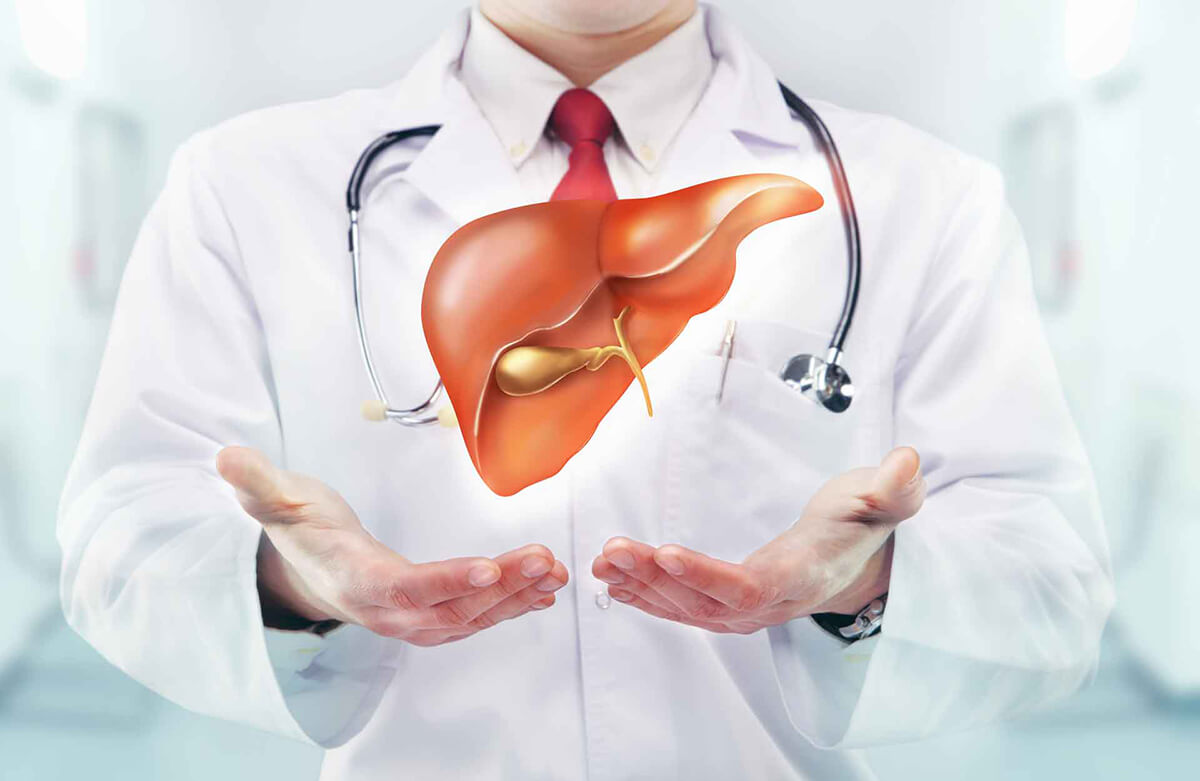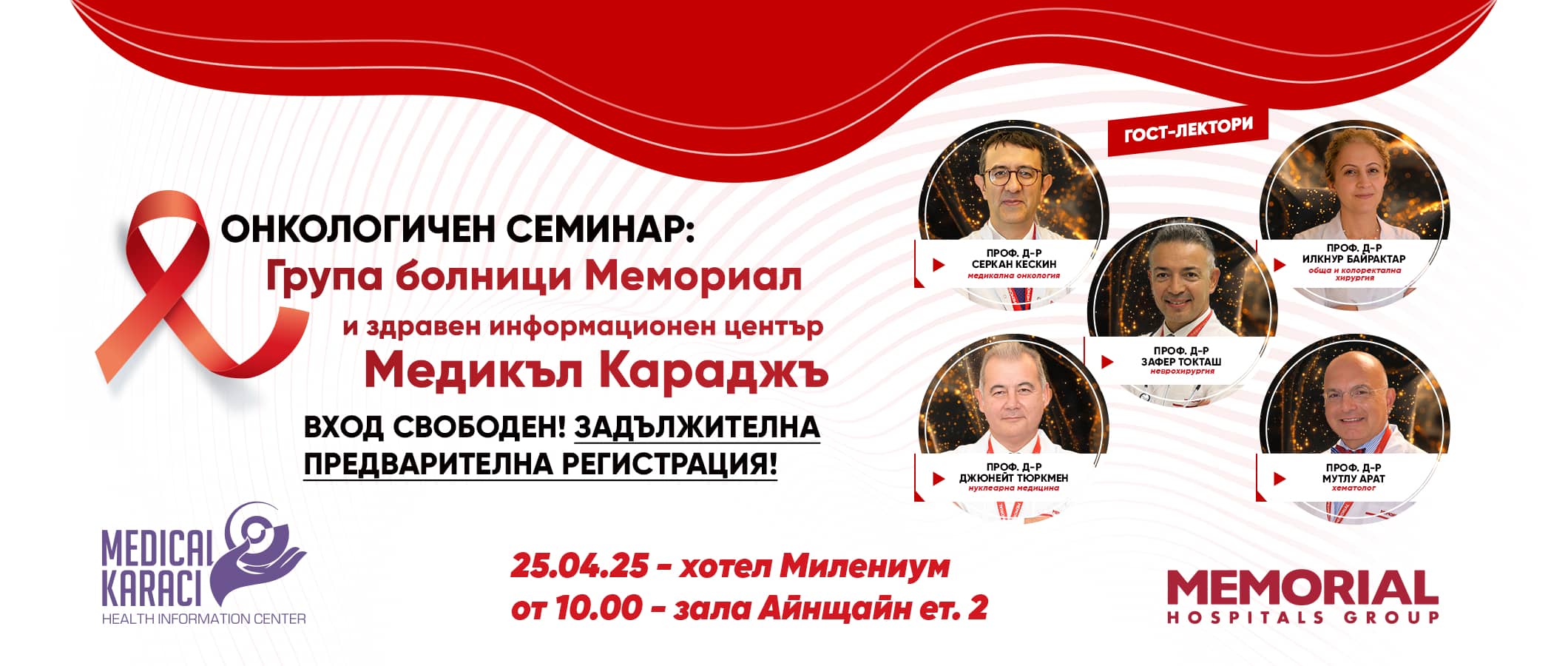Modern treatment methods for liver cancer - Chemoembolization and Radioembolization
Liver cancer is one of the most frequent malignancies in our country and is the third most common cancer. Every year in Bulgaria about 350-400 new cases are registered.
Modern medicine offers two new methods, chemoembolization and radioembolization, to help treat liver cancer. The aim of both methods is to directly attack the affected cells and stop their development. The idea is not only to deprive cancer cells of energy and nutrients. The idea is to remain longer under the influence of a high dose of chemotherapy or radiation.
What is Chemoembolization?
This method was first applied 30 years ago. However, it began to be applied more widely nearly 15 years ago, and its application has been steadily expanding. It is used not only for colorectal cancer, but also for all other cancerous growths. In Western countries, chemoembolization is routinely applied. Numerous centres have been established that are dedicated to the application of this method alone.
Chemoembolization is a method of embolization that is performed using microspheres containing chemotherapy drugs.
Embolization is a minimally invasive non-surgical procedure in which selective blockage of blood vessels is performed. In this way, the blood flow to the area being supplied by the vessel is terminated. The method is used to treat vascular malformations. In tumors, a chemotherapeutic drug is added through the blood vessel into the damaged cells. This achieves a double effect:
- on the one hand, the high-concentration drug directly attacks the primary tumor or its metastases
- on the other, the blocked blood vessel prevents the tumor cells from feeding and they die
In chemoembolization, a local substance with a high concentration of chemotherapy drugs is placed in direct contact with the tumor. This concentration can be up to 100 times greater than it is in the standard chemotherapy procedure. The main advantage with this procedure is that it does not damage healthy tissue. The aim of the method is to simultaneously block the blood vessels that supply the cancer cells (embolization) and introduce the chemotherapeutic agent directly into the malignant growth (chemotherapy). The idea is that once the nutrient pathway along the artery that feeds the metastasis is cut off, its development is permanently stopped. The tumor itself or the metastasis itself cannot be destroyed completely. They shrink repeatedly, possibly even becoming encapsulated. Surgical intervention is then resorted to to remove the tumour.
In which types of cancer is the chemoembolization method used?
Chemoembolization is used to treat malignant growths of the liver. It is suitable both for primary carcinoma in the liver itself and for secondary growths (metastases) that have disseminated into the liver from other areas such as the colon, breast, neuroendocrine tumors, etc. Chemoembolization is one of the most commonly chosen treatments for primary tumors that do not respond to standard systemic chemotherapy and/or cannot be surgically removed. It can also serve as a treatment concomitant to systemic chemotherapy. Of note is the fact that the procedure can also be performed as a preparation prior to surgical treatment. In some cases, thanks to it, patients may even become suitable for surgical intervention or transplantation.
How is the chemoembolization procedure performed?
Chemoembolisation is performed under local or general anaesthesia depending on the patient's condition, the type of liver cancer and the drug used. The procedure begins with the selection of a blood vessel in the groin area and its puncture. Special plastic tubes called catheters are used to navigate the blood vessels. Then, with the help of a special X-ray machine, an angiograph, the catheters are advanced to the liver blood vessels that supply the tumor growths. Once the tumor formations are reached through the catheters, the doctor injects microspheres that contain a chemotherapy drug. The drug that can be used in this procedure has a concentration 10 to 100 times higher than that of conventional systemic chemotherapy. In addition to everything said so far, the microspheres block the blood vessels supplying the tumour and prevent it from 'feeding'.
Usually a day or two after the procedure, patients return to their normal rhythm of life.
Complaints such as fatigue, loss of appetite and nausea, which may be experienced during the first two weeks after the procedure, gradually subside. Systemic side effects are not experienced after chemoembolization as with systemic chemotherapy. Between 4 and 6 weeks after the procedure, the first control imaging tests are performed. These are repeated at the 3rd and 6th month after the first follow-up.
Typically, chemoembolization is administered 2 times for colorectal malignancies and malignancies that affect both lobes of the liver. In patients with hepatocellular carcinoma, the procedure may be performed up to 3-4 times.
The decision whether chemoembolization treatment is appropriate for the patient is made after a thorough review of the results of imaging studies of the liver tumor (CT, MRI, PET-CT, etc.), the results of laboratory tests, the general condition of the patient and the other medications he/she has taken.
Treatment with chemoembolization is not appropriate for:
- patients on bed
- patients with predicted short survival
- with serious liver damage
- Patients in whom the tumor involved more than 60% of the lung.
The success rate for primary liver cancer is very high. In other cancers, the success rate is about 60-70, in the sense of extending life expectancy.
What is Radioembolization?
Radioembolization is a method of embolization in which a malignant mass is attacked using microspheres containing a radioactive isotope. As with chemoembolization, catheter angiography is used to reach the vessels that supply the cancer cells. Embolizing agents (yttrium 90 microspheres) are then injected directly into the tumor, whose radiation destroys it. Internal radiation treatment is very effective for almost all liver cancers. The procedure is local and the treatment is applied directly to the affected tissue only. The radioembolization method does not damage other organs, and its biggest advantage is that it does not cause systemic side effects.
In which types of cancer is radioembolization used?
Radioembolization is used to treat liver malignancies such as hepatocellular carcinoma and cholangiocarcinoma. In addition, the procedure is often performed in the presence of liver metastases that cannot be operated on. It is also used in the presence of metastases with little or no response to systemic chemotherapy. It can also serve as a treatment adjunctive to systemic chemotherapy. In such cases, radioembolization is often the first choice of treating physicians. It is appropriate when chemoembolization is inappropriate or unsafe for patients with thrombosis, larger malignancies, patients on "salvage" therapy, etc. The procedure can also be performed in preparation for surgical treatment. In some cases, it may even make patients suitable for surgery or transplantation. The effectiveness of the procedure is confirmed by numerous scientific studies.
How is the radioembolization procedure performed?
As with chemoembolization, the first step is to select a groin blood vessel and puncture it. Again, special plastic tubes called catheters are used to navigate the blood vessels. The procedure is performed under the control of a special X-ray machine - an angiograph. Through this technique, the catheters are moved to the liver blood vessels that supply the liver tumors. The doctor then injects microspheres containing a radioactive isotope (Yttrium 90) through the catheters, emitting beta-particle radiation that penetrates the tissue. This delivers the targeted radiation to the tumour, leaving the surrounding healthy tissue unaffected.
Radioembolization is performed by a team of specially trained interventional radiologists and a nuclear medicine specialist who has the lead role in determining a safe radiation dose.
The chances of success with radioembolization reach quite a high percentage. About 70-95% of patients with different types of liver cancer respond positively to this treatment method. However, let us remember that radioembolization is a method of administering treatment, not a guaranteed cure. Radioembolization is superior to the best supportive treatment methods. The final outcome depends largely on the stage of the disease and the general condition of the patient.
The decision whether radioembolization treatment is appropriate for the patient is made after a thorough review of the results of imaging studies of the liver tumor (CT, MRI, PET-CT, etc.), the results of laboratory tests, the patient's condition, and the other medications the patient has been taking.
Radioembolization treatment is not suitable for:
- patients on bed
- patients with predicted short survival
- with serious liver damage
- Patients in whom the tumor involved more than 60% of the lung.
The procedure is usually performed under local anaesthetic. Radioembolisation is performed in two stages over 7 to 10 days.
In the first stage, angiography is performed to visualize the blood vessels. A tracer isotope is injected through the catheter to calculate the correct dose for effective treatment so that no harmful deposits form outside the tumour.
In the second stage, an angiography is performed in which the already calculated dose of yttrium 90 is injected for optimal result. The angiography and nuclear imaging takes about 2-3 hours. The patient can go home after 4 - 6 hours of the procedure. Usually no complaints are expected to occur immediately after the procedure. Most patients feel fine during the recovery period. Usually a day or two after the procedure, patients return to their normal routine. Complaints such as fatigue, loss of appetite, and nausea may be seen during the first two weeks and gradually subside. These symptoms do not occur in all patients. Systemic side effects are not experienced as with systemic chemotherapy.
The first blood tests after the procedure are appointed the 2nd and 4th week. Blood tests are repeated after 3 months along with PET-CT, MRI or CT. Follow-up imaging studies are done at the 3rd, 6th and 12th month after the procedure. It is possible that by radioembolization the size of the liver tumor may be reduced and it may become operable. Radioembolization is used twice mostly for malignancies that affect both lobes of the liver.
For more information, we at Medical Karaj are at your service.
Call us on the following numbers "Medical Karaj": 0879 977 401 or 0879 977 402.









